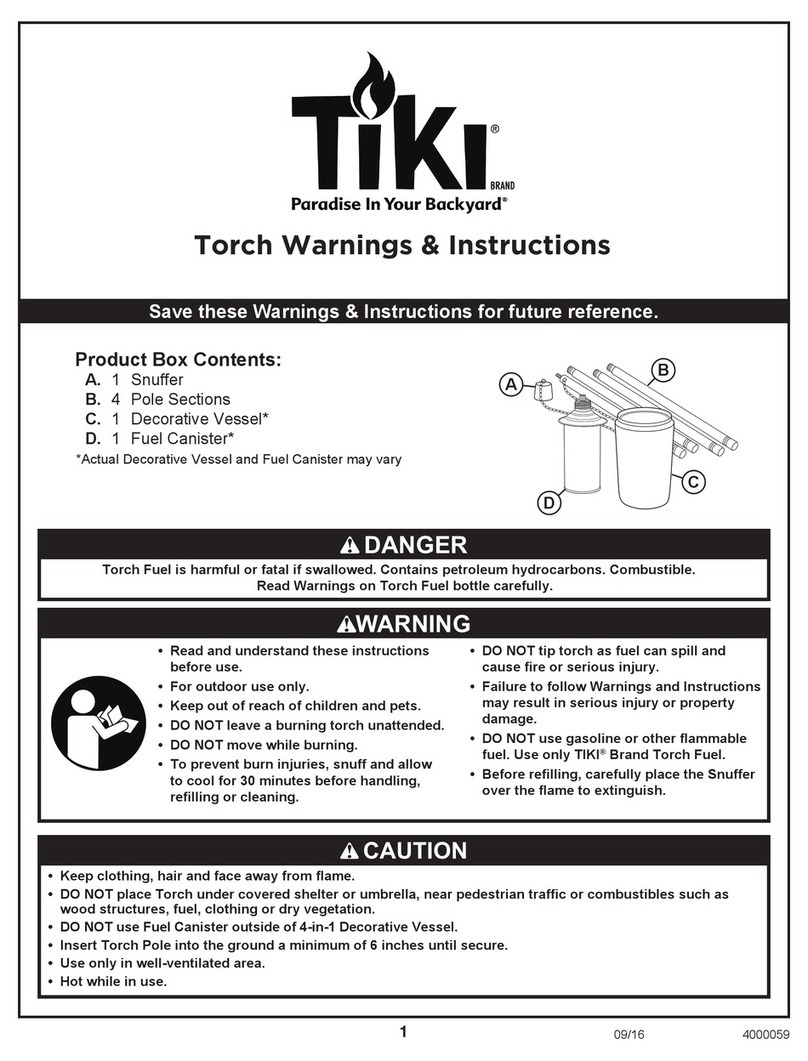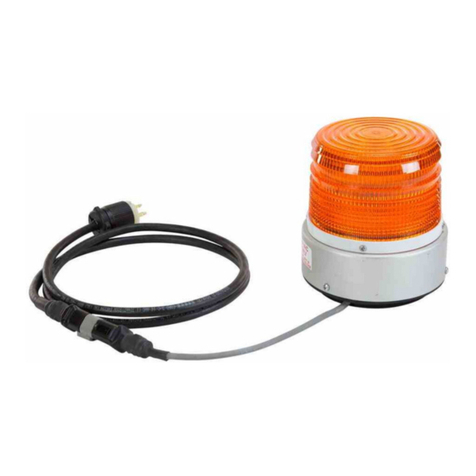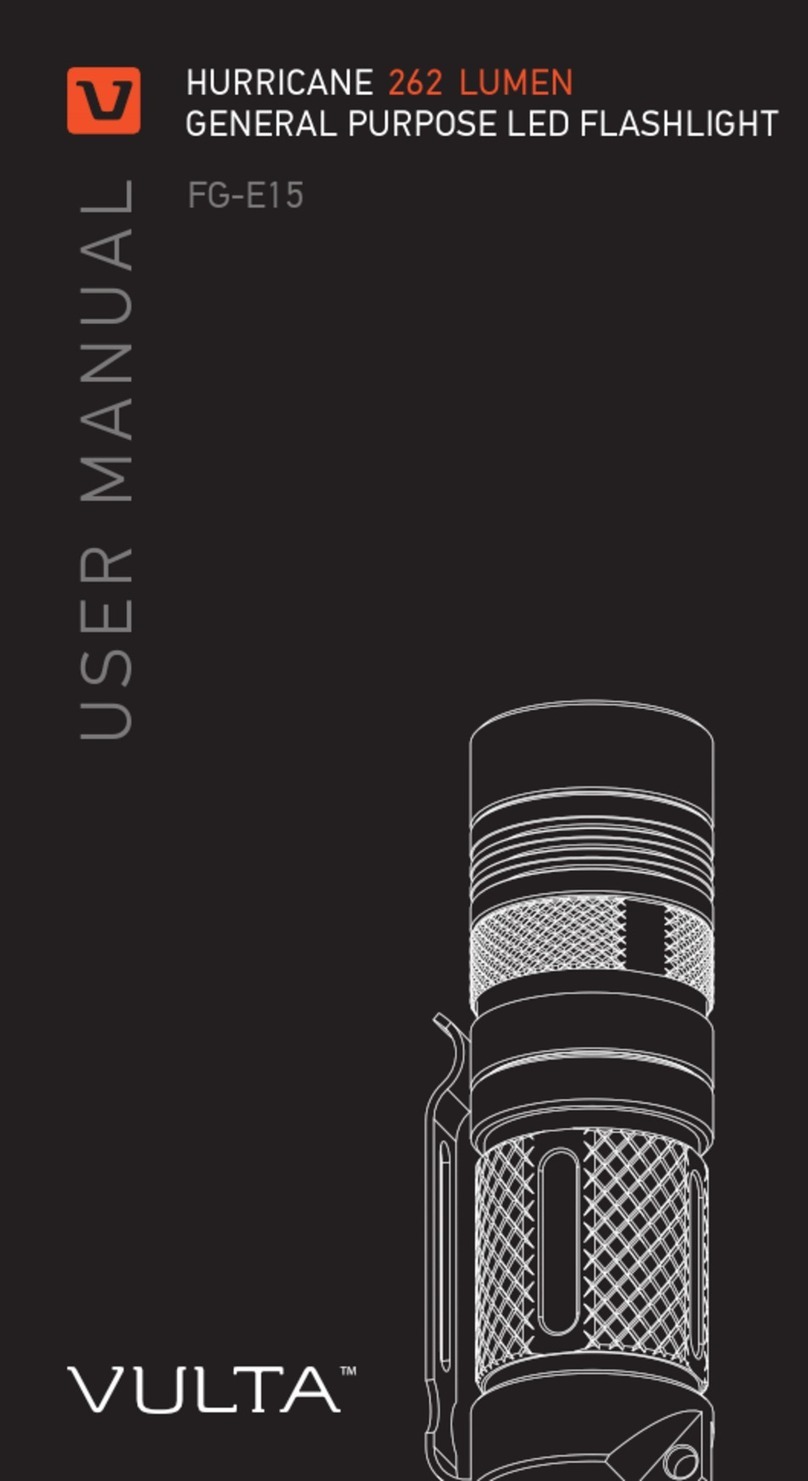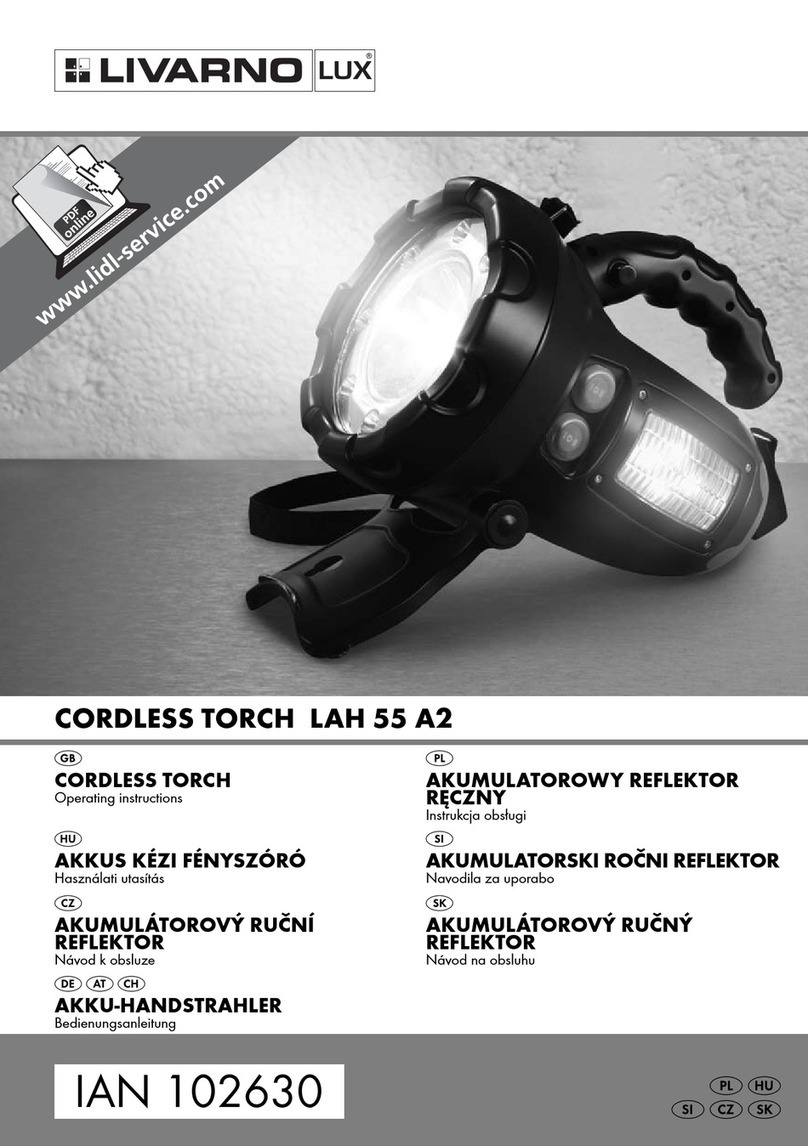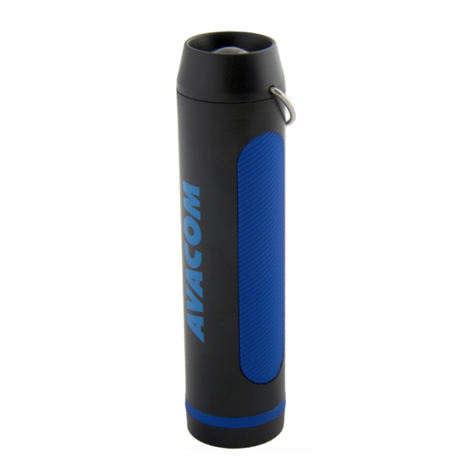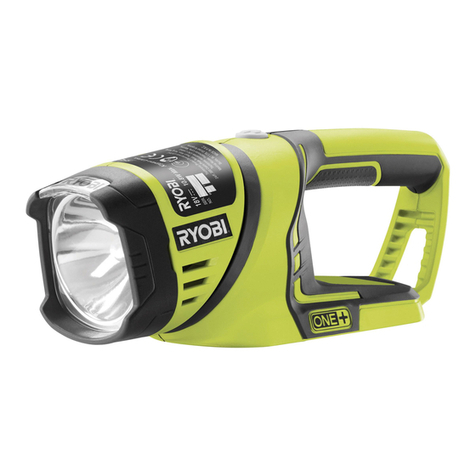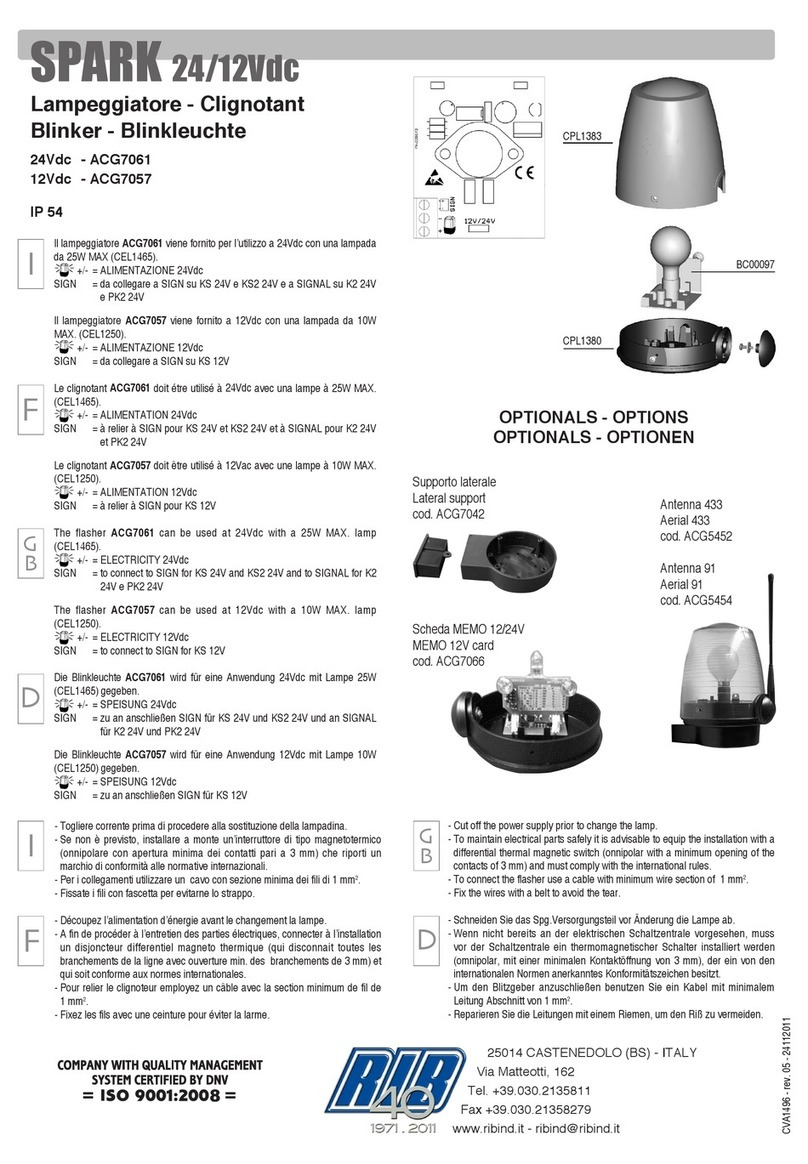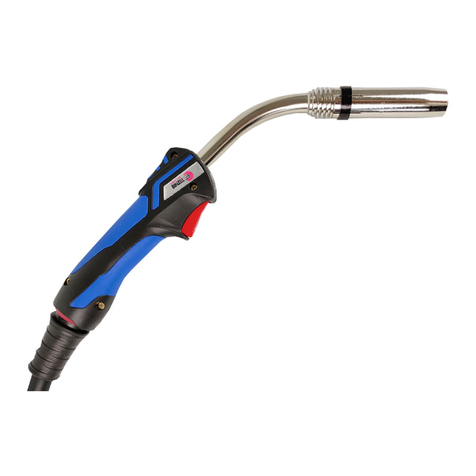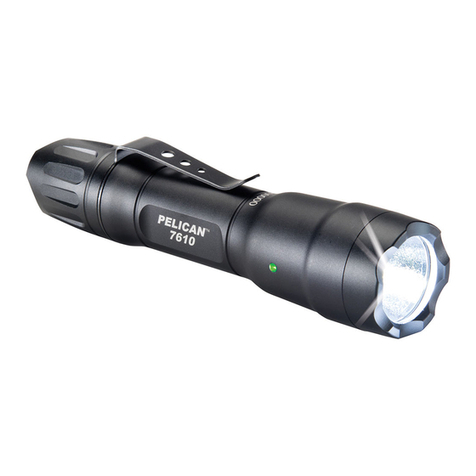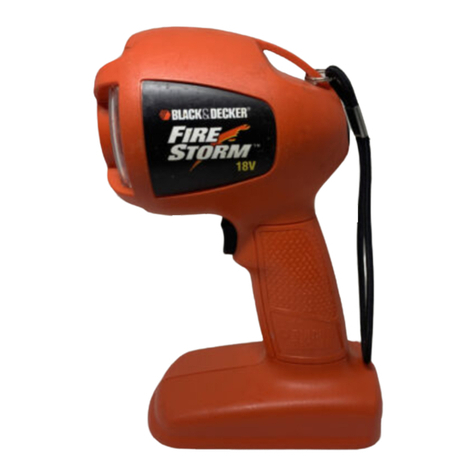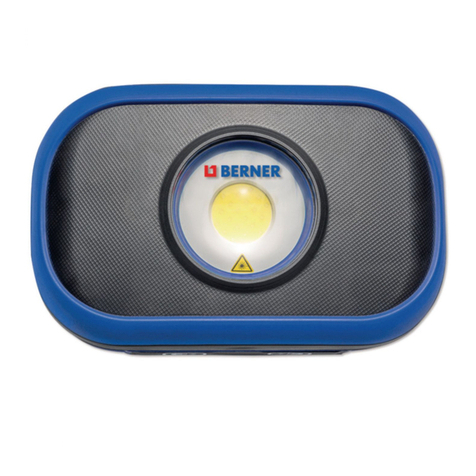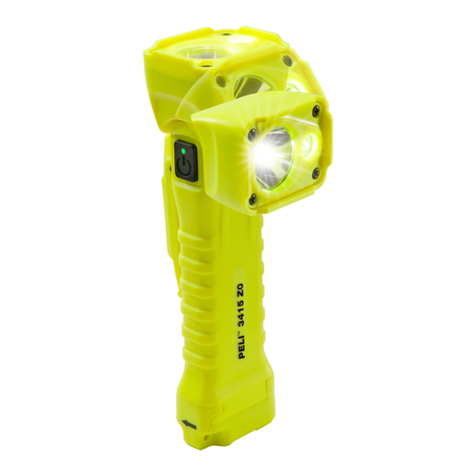
5. Flashlight maintenance
•The ESP flashlight requires only low maintenance thanks to its high durability. Still, it is recommended to perform an occasional
functional check of the contact springs, threads and the isolation. If moisture enters the inside of the flashlight (possible only when
the special isolation is damaged), it is necessary to dry the inside of the flashlight and clean the metal contacts.
•For comfortable carrying of the flashlight, we recommend the purchase of the nylon holder with metal clip BLH-02. We also offer
red signal cone BRC-01 for this flashlight which can be used to pull over vehicles during police checks and so on.
6. Warning
•This is not a toy for children. Do not shine directly into the eyes! If batteries or small parts are swallowed, see a doctor immedi-
ately. Do not throw out the used batteries as house garbage. The used batteries can be sent to the recycling station, the special
waste collection depot or your dealer.
7. Operating the charging adapter
•The compact charging adapter FLBC-01, which is supplied with BL-03 flashlight, can charge batteries of the type 18350 used
to power the flashlight. This adapter can also charge another type of batteries – 18650 (used to power other types of ESP flashlights).
•The LED on the adapter (see image 3) signals its status:
•red color = battery is being charged,
•green color = battery is fully charged / the adapter is plugged in (standby mode).
•Connect the charging adapter to a regular smartphone charger (micro USB
connection). The adapter can also be connected to a PC or laptop with
the enclosed USB cable. The battery should be inserted in line with the
adapter, as shown in image 4.
•Remove the battery from adapter in the upward direction. Always hold
the adapter with the other hand when inserting or removing batteries
to keep it stable.
8. Safety instructions for use of the charging adapter
•Use ONLY rechargeable batteries 18350 or 18650. Other types of batteries
may cause personal injury or damage. The adapter cannot charge multiple batteries simultaneously. Be careful to insert the batteries correctly according
to their polarity ( ) and ( ).+ −
•Do not cover the adapter during charging and always leave it in a space where it can cool off. Ensure there is sufficient air flow around the adapter – the bat-
tery heats up when it is charged. Do not disassemble the adapter and keep it dry.
9. Adjusting the spring – pressure which holds the baton open
•The security spring is adjusted by the manufacturer to an optimal pressure needed for opening the baton. This pressure en-
sures also the strength of hold of the baton in the closed and also in the open position. It is, however, possible to adjust
the spring pressure according to the individual needs of the user.
•The lower spring pressure enables easier opening of the baton and also its easier closing, since the cone endings of expand-
able tubes hold together less firmly. In an extreme situation, too low spring pressure could hinder the use of the baton, as the
baton will not hold in the closed position and it is also possible that it doesn't hold properly in the open position.
•If the spring pressure is higher, the baton has to be open with a stronger flick. The baton holds strongly in the open position
as the cone endings of the expandable tubes are locked more tightly. In an extreme situation, too high spring pressure could
hinder the use of the baton, as it is more difficult to open the baton (or to open it at all) and it is more difficult to close it.
•For adjusting the spring pressure it is necessary to use the needle-nose bent pliers.
•For reduction of the spring pressure push slightly both leaves of spring together (see image 5). Points of pliers must be
inserted between the baton spring guide cap side and spring leaf.
•For increase of the spring pressure bend both spring leaves so that they are in the top part more curved (see image 6).
•When reducing or increasing the spring pressure it is necessary to be careful and make just small changes. After any change of
the spring shape you must try whether the required pressure was attained. If not – repeat previous steps.
•After setting the resistance of the spring, check carefully that the tips fit closely together and that they are symmetrical. Other-
wise the spring tips may be broken when closing the baton – they may hit the inside wall of the baton tube (see image 7).
10. Warranty terms
•The manufacturer reserves the right to evaluate the legitimacy of the application of the warranty claim. The decisive factor
in accepting the claim is the correct use of the flashlight according to these instructions.
•A warranty of 2 years from the date of purchase is provided for this flashlight free of charge. The warranty is not applicable
to regular wear or scratching of the metal surfaces, heavy damage caused by the impact of hard objects (stone, concrete,
steel) and damage caused by hard mechanical force or prying.
•The manufacturer bears no responsibility for possible secondary damages caused by incorrect use of the flashlight or by use
that is not in accordance with these instructions.
Euro Security Products, Czech Republic
www.euro-security.info
OK
OK
OK
(4)
(3)
BLH-02 ....
7
6
5
These instructions are a copyright work.
The violation of a copyright law may be prosecuted.
